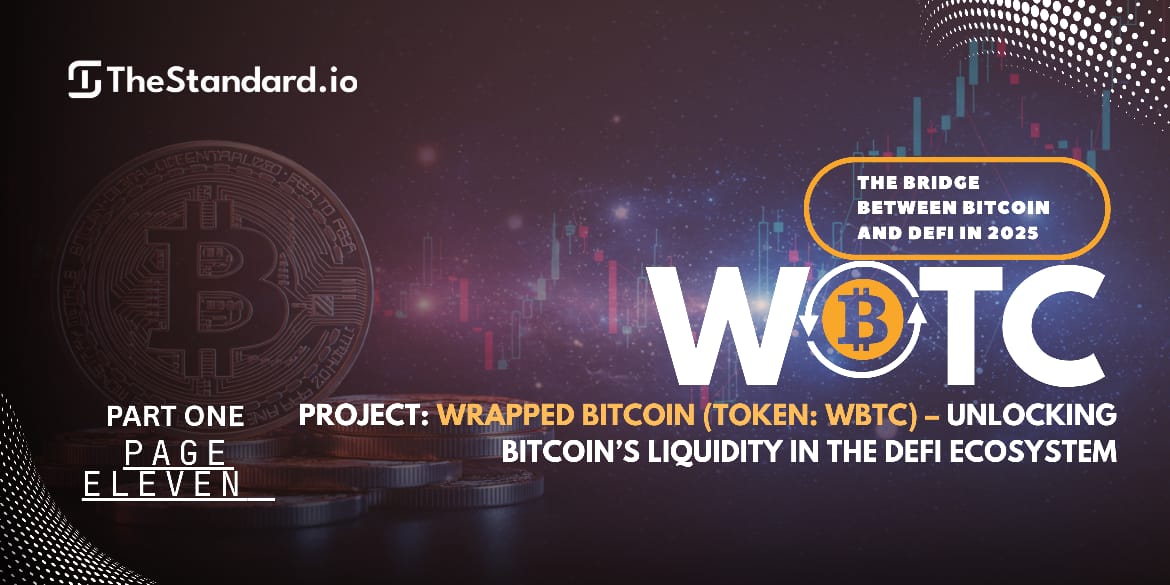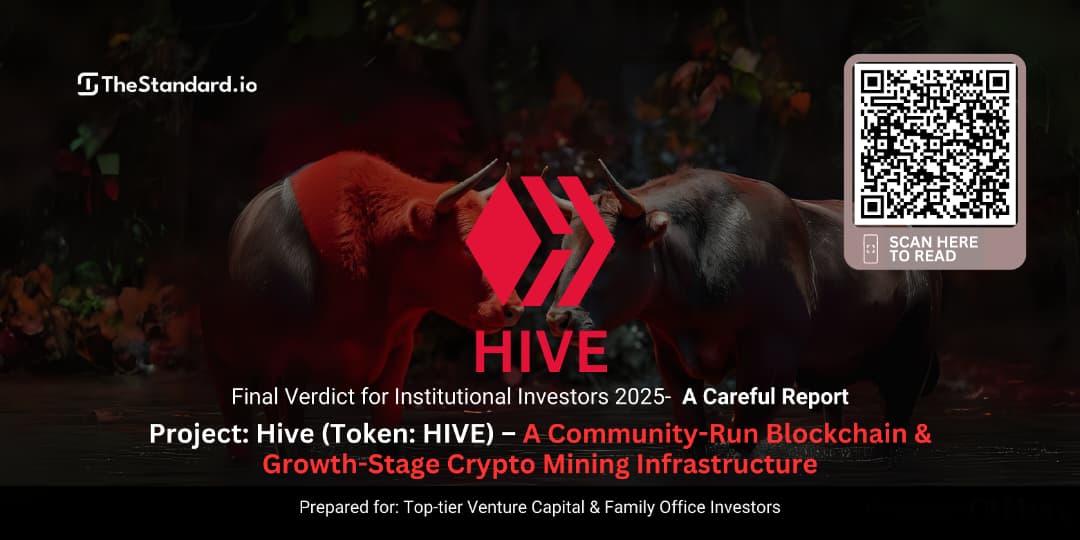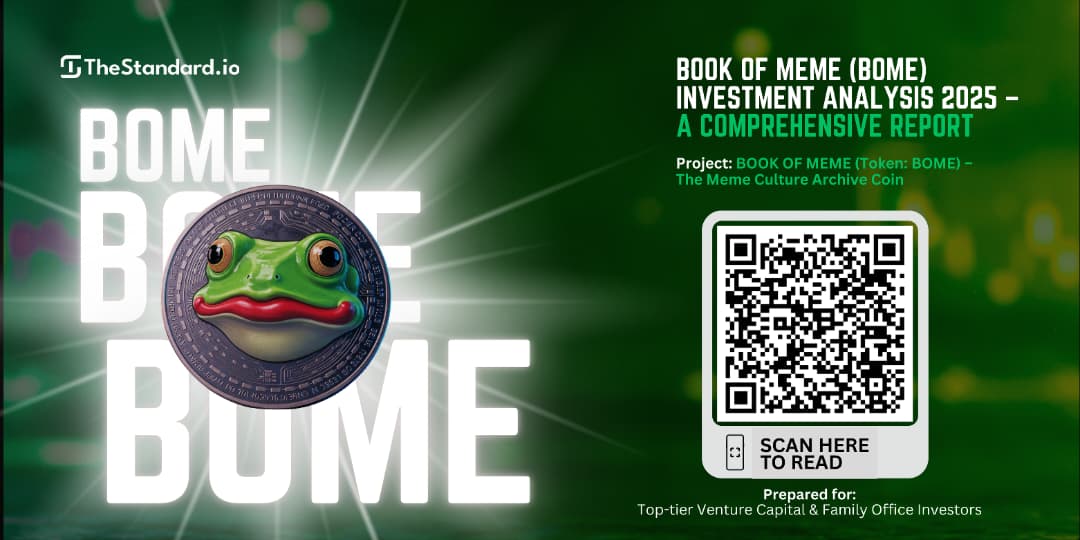Wrapped Bitcoin (WBTC): The Bridge Between Bitcoin and DeFi in 2025

Part 1 / Page 11
Network Architecture: How is WBTC’s Network Organized?
WBTC operates within the Ethereum blockchain but relies on an ecosystem that includes centralized custodians and decentralized mechanisms to manage the minting and redemption of tokens. The architecture is designed to create a secure and trustless system where Bitcoin can be used in Ethereum-based DeFi applications.
- Custodial Bitcoin Reserve and Minting Process:
At the heart of WBTC’s network is BitGo, a regulated custodian that holds the Bitcoin reserves backing WBTC. Each WBTC token issued is backed 1:1 by Bitcoin held in BitGo’s cold storage. When a user wishes to mint WBTC, they deposit their Bitcoin with BitGo, and an equivalent amount of WBTC is issued on the Ethereum blockchain. To redeem WBTC, users burn their tokens, and an equivalent amount of Bitcoin is returned to them from BitGo’s custody. This process of minting and burning is crucial in ensuring that WBTC remains fully backed by Bitcoin and maintains its value at all times (BitGo).
The minting and redemption process is verified by third-party audits that ensure WBTC tokens are consistently backed by an equivalent amount of Bitcoin. These audits are performed by companies such as Armanino, which provides transparency and helps build trust among users and institutional investors (Armanino). - Integration with DeFi Protocols:
WBTC’s architecture allows it to be used as collateral in DeFi protocols and to provide liquidity on decentralized exchanges (DEXs). As an ERC-20 token, WBTC can interact seamlessly with a wide range of Ethereum-based dApps. These include major DeFi protocols such as Aave, Compound, MakerDAO, and Uniswap, among others. By allowing Bitcoin holders to use their BTC without converting it, WBTC ensures that Bitcoin liquidity can flow directly into the Ethereum-based DeFi ecosystem. This interaction is made possible by Kyber Network, which facilitates WBTC’s liquidity provisioning, ensuring that users can easily trade WBTC and provide liquidity to DeFi platforms (Kyber Network, Aave). - Proof-of-Reserve and Transparency:
One of the key components of WBTC’s network architecture is the Proof-of-Reserve system. This system ensures that WBTC tokens are fully backed by Bitcoin held in BitGo’s custody. WBTC’s supply is regularly audited to ensure that there is no discrepancy between the number of WBTC tokens in circulation and the amount of Bitcoin held in reserve. The audits, conducted by firms like Armanino, allow users to independently verify the 1:1 backing of WBTC, increasing trust in the system (Armanino).
The transparency of the Proof-of-Reserve system has been crucial in gaining institutional adoption of WBTC, as it allows institutions to verify that each WBTC token is securely backed by Bitcoin. This transparency also allows the wider community to ensure that the WBTC network is operating according to its designed protocols, preventing potential issues such as over-issuance or fraud.
Consensus Mechanism: How Does the Platform Achieve Consensus?
WBTC operates on the Ethereum blockchain, which uses the Proof-of-Work (PoW) consensus mechanism, transitioning to Proof-of-Stake (PoS) with Ethereum 2.0. This consensus model is fundamental to Ethereum’s security and scalability and directly impacts WBTC’s operations.
- Ethereum’s Proof-of-Work (PoW):
Until Ethereum fully transitions to Ethereum 2.0, WBTC benefits from the security provided by Ethereum’s PoW mechanism. In PoW, miners solve cryptographic puzzles to validate transactions and add new blocks to the blockchain. This ensures the integrity of Ethereum’s network and the minting and redemption of WBTC tokens, as each transaction is securely recorded on Ethereum’s blockchain. This PoW mechanism ensures that WBTC tokens are securely transferred and remain immutable (Ethereum Foundation). - Ethereum 2.0 and Proof-of-Stake (PoS):
With the transition to Ethereum 2.0, the network will adopt a Proof-of-Stake (PoS) consensus mechanism, replacing PoW. In PoS, validators (who are chosen based on the amount of Ethereum they hold and are willing to “stake”) validate transactions and add new blocks to the blockchain. Ethereum’s shift to PoS is designed to improve scalability, reduce energy consumption, and increase transaction throughput. For WBTC, Ethereum 2.0’s PoS mechanism will result in faster and cheaper transactions, improving the efficiency of Bitcoin-to-WBTC transfers and ensuring seamless interaction with Ethereum-based dApps (Ethereum 2.0).
Scalability Solutions and Performance
As Ethereum continues to scale, so too does the performance of WBTC. With Ethereum’s current limitations around transaction speeds and high gas fees, scalability solutions have been implemented to improve performance and ensure the network can handle growing demand for WBTC.
- Layer 2 Solutions:
To address high gas fees and network congestion on Ethereum, WBTC has been integrated with various Layer 2 solutions such as Polygon, Arbitrum, and Optimism. These Layer 2 networks process transactions off the Ethereum mainnet and then settle them back on Ethereum, dramatically reducing transaction costs and increasing throughput. By leveraging these Layer 2 solutions, WBTC can handle a higher volume of transactions without encountering the scalability issues that Ethereum faces during peak demand periods. This also allows WBTC users to interact with the token in a more efficient and cost-effective way, improving its overall usability within DeFi (Polygon, Arbitrum, Optimism). - Sharding and Future Scalability:
Ethereum’s transition to sharding is expected to further enhance scalability. Sharding splits the Ethereum blockchain into smaller, more manageable pieces called shards, each capable of processing its own set of transactions. This will allow Ethereum to handle thousands of transactions per second, addressing the current scalability challenges and making WBTC more efficient to use. As Ethereum continues to evolve, WBTC’s performance will improve as it benefits from these advancements (Ethereum Foundation).
Security Model and Audits
The security of WBTC is paramount, given its custodial nature and role in DeFi. The project relies on BitGo’s robust security infrastructure and third-party audits to ensure the safety and transparency of its operations.
- BitGo Custodial Security:
As the custodian of WBTC’s Bitcoin reserves, BitGo uses multi-signature wallets and cold storage to ensure the security of the Bitcoin backing WBTC tokens. Multi-signature wallets require multiple private keys to authorize transactions, adding an extra layer of security. Cold storage ensures that Bitcoin is stored offline, making it immune to online attacks. This highly secure storage system has been audited and tested to ensure that Bitcoin reserves remain safe (BitGo). - Third-Party Audits:
WBTC’s security model is further strengthened by third-party audits conducted by firms like Armanino, which verify that each WBTC token is backed by an equivalent amount of Bitcoin. These audits ensure that the 1:1 backing of WBTC is maintained at all times, providing transparency to users and building trust in the project. The ability to independently verify the Bitcoin reserves backing WBTC is a critical component of the project’s security (Armanino).
Conclusion
The technology and infrastructure behind Wrapped Bitcoin (WBTC) are built on a robust and secure foundation, leveraging Ethereum’s smart contract capabilities, BitGo’s custodial services, and Kyber Network’s decentralized liquidity solutions. WBTC’s integration with DeFi protocols and use of Layer 2 solutions ensure that the token remains efficient, secure, and scalable as demand for Bitcoin liquidity grows in the Ethereum ecosystem.
While Ethereum’s scalability remains an ongoing challenge, WBTC has taken proactive measures by integrating with Layer 2 solutions and preparing for the future scalability improvements in Ethereum 2.0. With BitGo’s security infrastructure and regular third-party audits, WBTC is positioned as a secure, transparent, and highly functional asset in the DeFi space.
Next is 3B: Network Architecture
Having explored the technology behind WBTC, we now move on to Section 3B: Network Architecture, where we will look at the technical architecture of the network, the role of key components, and how WBTC operates within the broader Ethereum ecosystem.
This concludes Section 3A: Technology & Infrastructure for Wrapped Bitcoin (WBTC). We have covered its blockchain type, network architecture, consensus mechanism, scalability solutions, and security model. Next, we will delve into the network architecture in Section 3B: Network Architecture.
3B. Network Architecture
Overview of WBTC's Network Architecture
The network architecture of Wrapped Bitcoin (WBTC) is built around a hybrid system that combines centralized custodianship with decentralized Ethereum-based smart contracts. WBTC operates as an ERC-20 token on the Ethereum blockchain, but the key component of its network is its custodial model, where the Bitcoin that backs each WBTC token is held by a trusted custodian, BitGo. This model allows Bitcoin holders to participate in Ethereum's decentralized finance (DeFi) ecosystem without needing to convert their Bitcoin into other cryptocurrencies.
1. Custodial Bitcoin Reserve and Minting Process
At the core of WBTC’s network architecture is the custodial model managed by BitGo, a leading provider of digital asset custody services. BitGo’s role as the custodian ensures that every WBTC token is fully backed by an equivalent amount of Bitcoin held in reserve. Here’s how the minting and burning process works:
Minting WBTC:
- Step 1: Bitcoin Deposit: The process begins when a user or merchant deposits Bitcoin with BitGo. This Bitcoin is held in BitGo’s cold storage (offline wallets), ensuring its security.
- Step 2: Issuing WBTC: Once the Bitcoin is deposited, BitGo issues an equivalent amount of WBTC tokens on the Ethereum blockchain. These tokens are minted using Ethereum’s ERC-20 token standard. The minted WBTC tokens are sent to the user’s Ethereum address, allowing them to participate in Ethereum-based DeFi applications.
- Step 3: Third-Party Audits and Verification: To ensure that the Bitcoin reserves match the total supply of WBTC tokens in circulation, the system uses proof-of-reserve audits conducted by third-party auditing firms such as Armanino. These audits verify the 1:1 backing and ensure the integrity of the system (Armanino).
Burning WBTC:
- Step 1: Redeeming WBTC: If a user wants to redeem their Bitcoin, they initiate the process by burning their WBTC tokens on the Ethereum network. This involves sending the tokens to a burn address—an address where tokens are effectively destroyed and no longer in circulation.
- Step 2: Bitcoin Withdrawal: Once the WBTC tokens are burned, BitGo releases the equivalent amount of Bitcoin from its cold storage to the user’s designated Bitcoin address. The redemption process ensures that WBTC remains fully backed by Bitcoin at all times.
The custodial model is essential for maintaining the 1:1 peg between Bitcoin and WBTC and ensures that the process remains trustworthy, especially for institutional investors. This custodian-backed minting and burning process provides a secure, seamless experience for Bitcoin holders who want to use their Bitcoin in Ethereum-based DeFi protocols without needing to convert to other assets (BitGo).
Thank you for taking the time to read this article. We invite you to explore more content on our blog for additional insights and information.
https://www.thestandard.io/blog
"If you have any comments, questions, or suggestions, please do not hesitate to reach out to us at [ https://discord.gg/K72hed6FRE ]. We appreciate your feedback and look forward to hearing from you."
CLICK HERE TO CONTINUE
PART 1 / PAGE 12: www.thestandard.io/blog/wrapped-bitcoin-wbtc-the-bridge-between-bitcoin-and-defi-in-2025-12
6 of the best crypto wallets out there
Vulputate adipiscing in lacus dignissim aliquet sit viverra sed etiam risus nascetur libero ornare non scelerisque est eu faucibus est pretium commodo quisque facilisi dolor enim egestas vel gravida condimentum congue ultricies venenatis aliquet sit.
- Id at nisl nisl in massa ornare tempus purus pretium ullamcorper cursus
- Arcu ac eu lacus ut porttitor egesta pulvinar litum suspendisse turpis commodo
- Dignissim hendrerit sit sollicitudin nam iaculis quis ac malesuada pretium in
- Sed elementum at at ultricies pellentesque scelerisque elit non eleifend
How to choose the right wallet for your cryptos?
Aliquet sit viverra sed etiam risus nascetur libero ornare non scelerisque est eu faucibus est pretium commodo quisque facilisi dolor enim egestas vel gravida condimentum congue ultricies venenatis aliquet sit quisque quis nibh consequat.

How to ensure the wallet you’re choosing is actually secure?
Integer in id netus magnis facilisis pretium aliquet posuere ipsum arcu viverra et id congue risus ullamcorper eu morbi proin tincidunt blandit tellus in interdum mauris vel ipsum et purus urna gravida bibendum dis senectus eu facilisis pellentesque.
What is the difference from an online wallet vs. a cold wallet?
Integer in id netus magnis facilisis pretium aliquet posuere ipsum arcu viverra et id congue risus ullamcorper eu morbi proin tincidunt blandit tellus in interdum mauris vel ipsum et purus urna gravida bibendum dis senectus eu facilisis pellentesque diam et magna parturient sed. Ultricies blandit a urna eu volutpat morbi lacus.
- At at tincidunt eget sagittis cursus vel dictum amet tortor id elementum
- Mauris aliquet faucibus iaculis dui vitae ullamco
- Gravida mi dolor volutpat et vitae lacus habitasse fames at tempus
- Tellus turpis ut neque amet arcu nunc interdum pretium eu fermentum
“Sed eu suscipit varius vestibulum consectetur ullamcorper tincidunt sagittis bibendum id at ut ornare”
Please share with us what is your favorite wallet using #DeFiShow
Tellus a ultrices feugiat morbi massa et ut id viverra egestas sed varius scelerisque risus nunc vitae diam consequat aliquam neque. Odio duis eget faucibus posuere egestas suspendisse id ut tristique cras ullamcorper nulla iaculis condimentum vitae in facilisis id augue sit ipsum faucibus ut eros cras turpis a risus consectetur amet et mi erat sodales non leo.

Subscribe to our newsletter.
Get the latest alpha from us, and the Chainlink build program in an easy-to-read digest with only the best info for the insider.
It's an easy one-click unsub, but I bet you won't; the info is just too good.

Try the future of borrowing today.
Don't wait. It's easy to open a free smart vault
then start earning a yield and borrowing today.
0xf5A27E55C748bCDdBfeA5477CB9Ae924f0f7fd2e
USDs Contract on Arbitrum:
0x2Ea0bE86990E8Dac0D09e4316Bb92086F304622d










